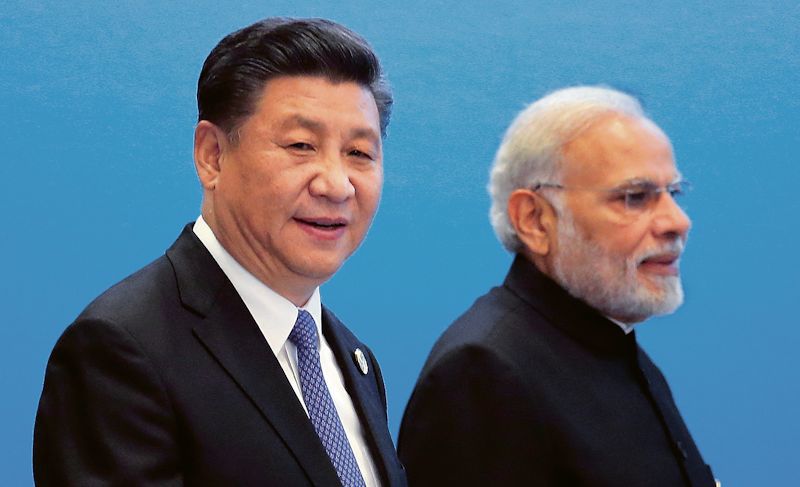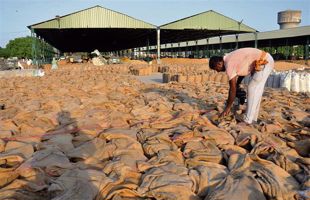
Key players: Despite the tensions on the borders, India and China continue to be important members of international groupings like the SCO and BRICS. Reuters
Lt Gen Pradeep Bali (Retd)
Military Analyst
THE stated government policy regarding the bilateral engagement with China is predicated on restoring peace and tranquillity along the Line of Actual Control (LAC); this includes de-escalation and disengagement in east Ladakh. Overemphasis on this aspect can well be interpreted as a strident stance reflective of a strong political will, but not pragmatism. China is not only our biggest neighbour but also a major international power with whom it would be prudent to remain engaged on a variety of issues of mutual interest and at various forums.
Despite the tensions on the borders, India and China continue to be important members of international groupings like the Shanghai Cooperation Organisation and BRICS. In fact, the latter is expanding in a big way, with several nations around the globe seeking its membership. India and China have been on the same page at various fora, like the IMF and the WTO, and have expressed their solidarity against the position adopted by developed countries. Both nations also share a long history of cooperation and coordination on environmental issues at global platforms. Despite China’s deep concerns about the Quad grouping, it would understand that India is strategically autonomous. The economic engagement in terms of India-China trade ties has been on the rise and it has been one of our largest sources of imports for the past 15 years despite efforts to reduce this dependency through import substitution and free trade agreements with ASEAN countries. This has resulted in an increasing trade deficit, skewed in favour of China.
However, despite these commonalities, the tense and inimical situation on the LAC is likely to continue, with the possibility of unpleasant face-offs between the Indian Army and the PLA. The military commander-level talks in east Ladakh have meandered on and become an exercise in filibustering by the Chinese. The Indian Army has responded strongly and built up its capabilities with enhanced deployment of troops and equipment. In short, for us, it’s a policy of containment on the northern borders and calibrated engagement on other issues.
In this kind of setting, India has to keep its leverages well-honed. Surprisingly, we have not optimised these aspects in the past and followed a path of appeasement against a wily and shrewd adversary like China.
First and foremost is the Tibet issue, which seems to have increasingly lost salience internationally. The fact that the spiritual and political head of Tibet was given sanctuary in India was seen as a hostile act by the Chinese. That the Central Tibetan Administration (CTA), also labelled as the Tibetan Government-in-Exile, was allowed to be set up in Dharamsala has always irked the Chinese Communist Party. In 1959, it was a bold move, but over the years, the Chinese hysteria about Tibet and ‘splittist’ Tibetans has seen India go overboard in trying to downplay this card. This attitude towards a country that makes no attempt to hide its views about J&K, disregarding Indian sensitivities, is puzzling. China has no compunction in obstructing Indian efforts at the UNO to include Pakistani perpetrators of terrorism on the list of designated terrorists. That a permanent member of the Security Council behaves in such an egregious fashion only shows that it places the narrow interests of its close ally — Pakistan — over international obligations.
The CTA now increasingly controls political aspects, with the Dalai Lama stepping into the shadows, though it is his charisma that continues to be the principal asset of the Tibetan cause. The future of the institution of the Dalai Lama is somewhat uncertain, with the present incumbent, who is getting on in years, having even mentioned that it may cease after his demise. The Chinese as well as the Indian government may have their own game plans, but the CTA is here to stay and needs to be played up in a manner which becomes a leveraging point for India.
Taiwan is the most sensitive issue for China, with the US playing hot and cold in the game of power politics in the South China Sea. India, while recognising the one-China principle, has semi-formal contacts and relations with Taipei. The India-Taipei Association in Taiwan and Taipei Economic and Cultural Centre in India are quasi- missions that recognise the extensive trade relations between India and Taiwan. Visits by retired chiefs of the armed forces, politicians and artistes recognise the fact that Taiwan cannot be wished away. Interestingly, PM Narendra Modi had visited Taiwan in 1999, when he was a BJP functionary. A bilateral investment agreement with Taiwan has been in force since 2005 and was revised in 2018, reflecting a robust and growing economic relationship with potential.
This needs to continue and gather more substance. Communist China has blatantly disregarded Indian sensitivities about Kashmir’s territorial inviolability as an integral part of this country by building the China-Pakistan Economic Corridor, which runs through Pakistan-occupied Kashmir. To pay back in the same coin and create a pressure point for hard bargaining, India needs to play up the Taiwan issue, creating ambiguity about its status.
Beyond all this, India needs to look at a lasting solution to the vexed LAC issue, with its multiple disputed and sensitive points, which are on the rise. China’s leadership is a master of procrastination on troublesome issues, as per its political calculus. However, that should not deter our leadership from endeavouring to resolve a macro problem which impacts both security and economy.
While the next government in India is expected to prioritise development and economic progress, it would possibly have the best opportunity for resolving the border issue with China in a comprehensive manner. This would entail some give and take, for which the political narrative would have to be built, seeking a satisfactory solution. A strategic handshake with the Dragon across the Himalayas would surely be in mutual interest.
Join Whatsapp Channel of The Tribune for latest updates.




























